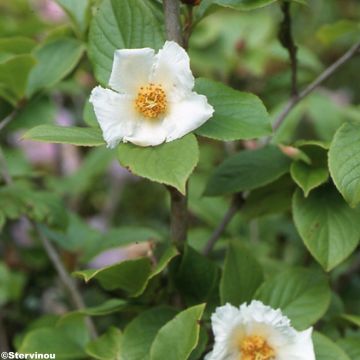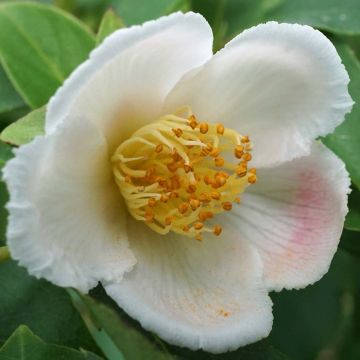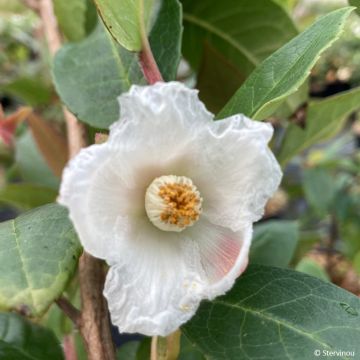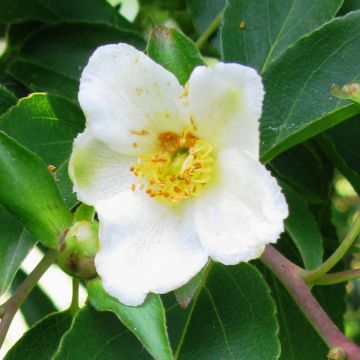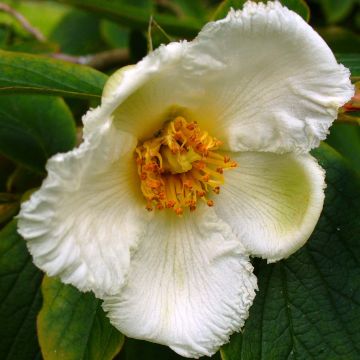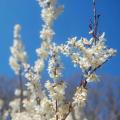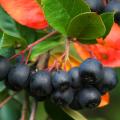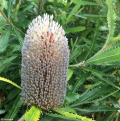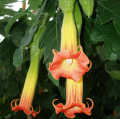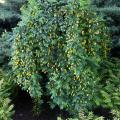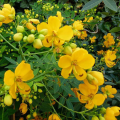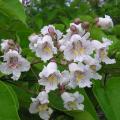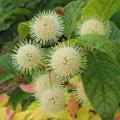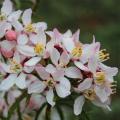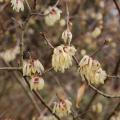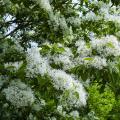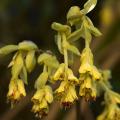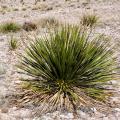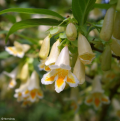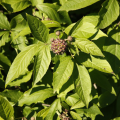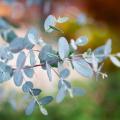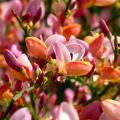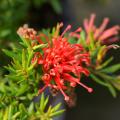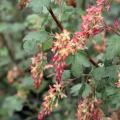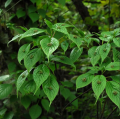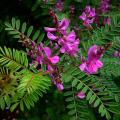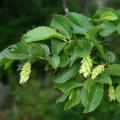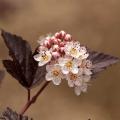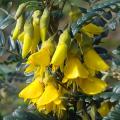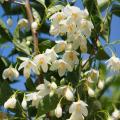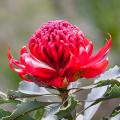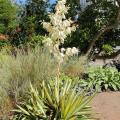Stewartia
Does this plant fit my garden? Set up your Plantfit profile →
Available in 2 sizes
Available in 1 sizes
Available in 1 sizes
Available in 1 sizes
Available in 1 sizes
Stewartias are trees or bushes closely related to camellias and unfortunately not very common in our gardens. They bloom in summer and are interesting for their autumn colours as well as their colourful bark in winter. In reality, everything is decorative about these trees: the flower, the fruit, the autumn foliage, and even the coloured bark.
Stewartia pseudocamellia has pure white flowers which are delicately fringed on the edges while the centre is illuminated by beautiful golden yellow stamens. This small tree can reach 4 to 5 m (13 to 16ft) in our gardens. It is hardy once established, but young plants can suffer during heavy frost. Unlike camellias, the foliage is deciduous and in autumn, the leaves turn beautiful red and orange colours.
Less well known, Stewartia rostrata is a small Chinese tree accustomed to cold climates and one of the least demanding in terms of soil. Its summer flowering is more abundant and more colourful than that of other Stewartias and it displays magnificent autumn shades.
Stewartias should be planted in partial shade protected from cold winds to preserve the flowering. The soil should be moist, humus-rich, acidic, and well-drained. Pruning should be carried after flowering and helps maintain a more compact habit.
Haven't found what you were looking for?







































